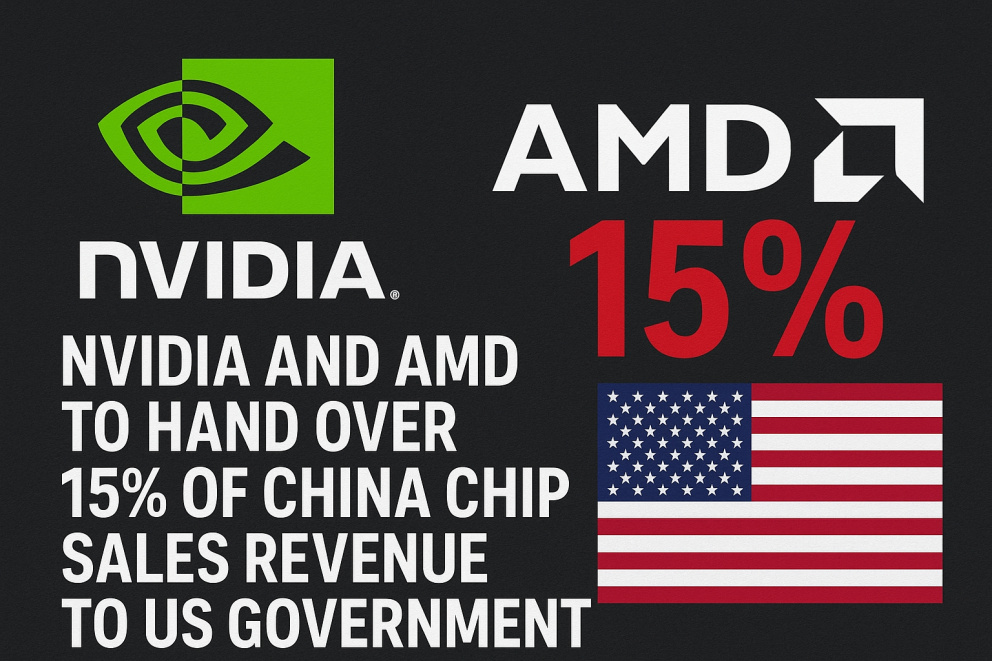Nvidia and AMD to Hand Over 15% of China Chip Sales Revenue to US Government
Introduction
In a surprising move that could reshape the global
semiconductor industry, the U.S. government is reportedly requiring Nvidia and
AMD to hand over 15% of their chip sales revenue from China as
part of new trade restrictions. This unprecedented policy aims to curb China’s
access to advanced AI and computing technologies while compensating the U.S.
for potential revenue losses due to export controls.
This development marks a significant escalation in the
ongoing U.S.-China tech war, with major implications for chipmakers, global
supply chains, and AI development.
Why Is
the U.S. Imposing This Fee?
The U.S. has been tightening restrictions on advanced
semiconductor exports to China, fearing that cutting-edge AI chips could
enhance China’s military and surveillance capabilities. Previous measures
included:
- Export
bans on high-performance GPUs like Nvidia’s A100 and H100.
- Licensing
requirements for selling certain chips to Chinese firms.
- Blacklisting key
Chinese tech companies (e.g., Huawei, SMIC).
However, these restrictions have hurt U.S. chipmakers’
revenues, as China accounts for a significant portion of their sales. To offset
these losses, the Biden administration is now demanding 15% of Nvidia
and AMD’s China-based earnings as a form of compensation.
How Will
This Impact Nvidia and AMD?
Both companies generate billions from the Chinese market:
- Nvidia derived ~20%
of its revenue from China in 2023.
- AMD also
relies on China for a substantial share of its data center and gaming GPU
sales.
A 15% revenue forfeiture could:
✅ Reduce profitability in one of their largest
markets.
✅ Force price hikes on remaining approved chips
sold in China.
✅ Accelerate China’s push for self-sufficiency in
semiconductors (e.g., Huawei’s Ascend AI chips).
China’s
Response: More Sanctions and Domestic Chip Development
China has already retaliated with:
- Export
controls on gallium and germanium (key chipmaking materials).
- Restrictions
on rare earth metals used in U.S. tech manufacturing.
- Increased
funding for domestic chip firms like SMIC and Huawei.
If Nvidia and AMD pass the 15% fee to Chinese buyers,
companies like Alibaba, Tencent, and Baidu may shift to homegrown alternatives,
further weakening U.S. dominance in AI hardware.
Global
Semiconductor Industry at a Crossroads
This move could lead to:
🔹 More
decoupling between U.S. and Chinese tech ecosystems.
🔹 Higher
costs for AI development worldwide.
🔹 Increased
investment in alternative supply chains (e.g., India, Vietnam).
Conclusion:
A Risky Gamble for the U.S.
While the U.S. aims to limit China’s AI advancements,
forcing Nvidia and AMD to surrender 15% of China revenue may backfire by:
- Accelerating
China’s chip independence.
- Reducing
U.S. firms’ competitiveness.
- Escalating
trade tensions further.









